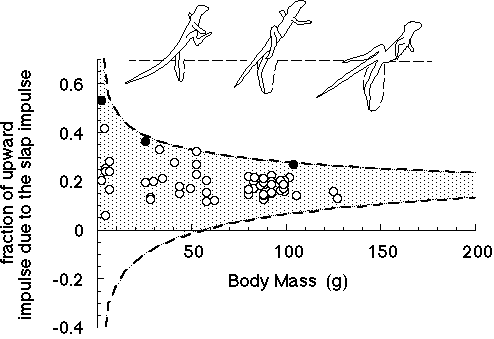Glasheen, J.W. and T.A. McMahon (1996d). The allometry of water-running
ability in basilisk lizards (Basiliscus basiliscus). J. Exp. Biol. In Press
Basilisk lizards (Basiliscus basiliscus) may reach high population densities
because the juveniles and adults have differing water-running abilities
and therefore live in different habitats. However, there is no a priori
reason to expect juveniles to be better able to run on water than adults.
To determine the causal relationship between body size and water-running
ability, we made three types of measurements: 1) direct morphological measurements
on preserved specimens; 2) hydrodynamic measurements on physical models
of the lizards' feet; and 3) kinematic measurements of basilisks running
on water. The information gathered from these investigations was used to
develop an allometric model which predicted the maximum upward force impulses
that the lizards could generate. We find that small lizards have the capacity
to generate large force surpluses. A 2-g lizard can generate a maximum upward
impulse that is more than twice what it needs to support its body weight
(225%). In contrast, a 200-g lizard, under optimal conditions, can just
barely support its body weight (110%).

